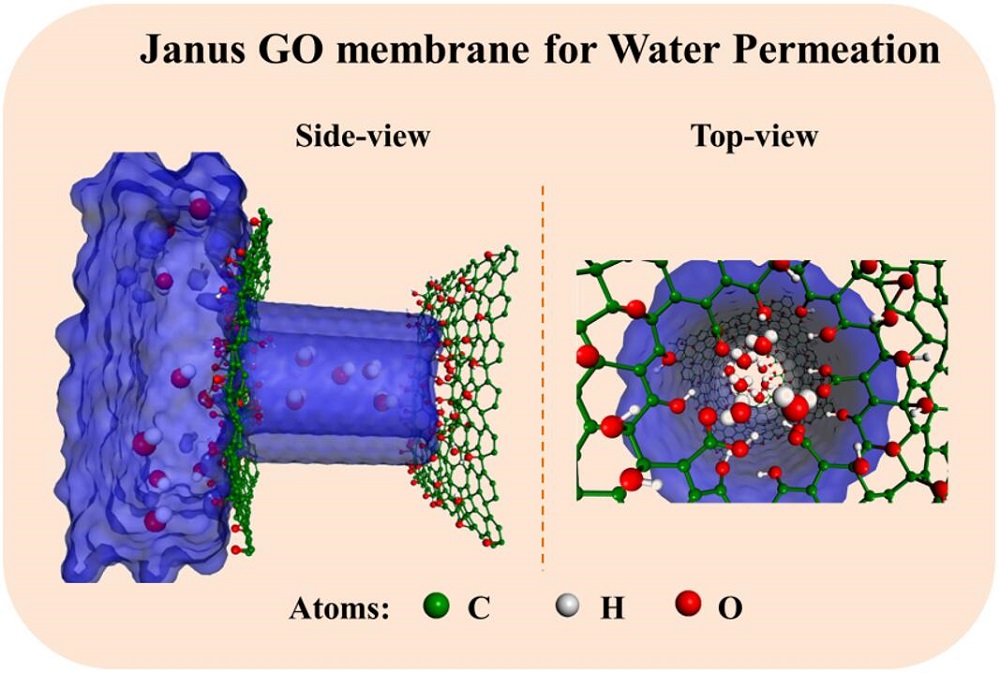After Nair et al. demonstrated that graphene oxide (GO) membranes exhibit excellent water transfer properties [
1], many researchers have been involved in studying their confined transport mechanism [
2,
3] and ultra-high water permeability [
4,
5]. Chen et al. reported that the water transport behavior through GO membranes was considerably affected by the thermophoretic [
4] and rarefied effects [
3] and that the flow rate could be tuned by varying the structural parameters of GO membranes [
6]. In addition to the pore size [
7,
8], the interlayer distance [
6,
9], and the oxidized degree [
10,
11], the orientations of the oxidized and pristine regions in GO membranes play a vital role in the water–separation process [
12], determining the number of empty spaces in the interlayer gallery and the wrinkles in GO nanosheets [
13,
14]. Both oxidized and pristine regions are highly interlaced in GO membranes [
15]. Using molecular simulations, Willcox and Kim [
16] and Ban [
15] et al. demonstrated that the random locations of the oxidized and pristine zones blurred the water-transfer mechanism through GO membranes. Practically, it was found that the interlayer transport for water permeation was considered as plug flow in the pristine zone, whereas it was considered as Poiseuille flow in the oxidized zone [
17]. Generally, the oxidized surface of GO membranes captured water from bulk solutions [
18], while the pristine channels granted a low frictional resistance for the water slipping away [
1]. To date, these two points are the primary explanations for the excellent permeation of water molecules through GO membranes. However, since the oxidized and pristine regions are not uniformly distributed in the GO membranes, one may doubt whether the nonresistance of capillary motion can still contribute to the quick permeation of water within these GO membranes. In addition to the interlayer transport, both aligned and straight pores represent another important pathway [
19], which considerably stimulates pore penetration. Experimentally, it is necessary to increase the porosity and the alignment of the pores to enhance pore penetration [
20]. Thus, with highly aligned tunnels, can the pristine interlayers still favor water permeation? Researches demonstrated that when the aligned pores were oxidized, the water flux was significantly enhanced compared to that of pristine pores [
21], indicating that the oxidized tunnels favored water permeation. In a previous study, we reported that a monolayer GO membrane with 2.4 Å-sized pores, and an oxidized degree of 0.49 (C/O ratio) allowed fast water permeation while fully rejecting ethanol owing to both the sieving effect and the preferential adsorption of water over ethanol [
22]. However, molecular insights into the effect of oxidized and pristine surfaces in GO membranes on water permeation remain unclear. Therefore, to understand the abovementioned effect, 2.4 Å-sized pores and an oxidized degree of 0.49 are adopted. Based on these optimal microstructures, it is important to realize a favorable water-selective permeation in a multilayer GO membrane, which would be more practical for scalable fabrication.










